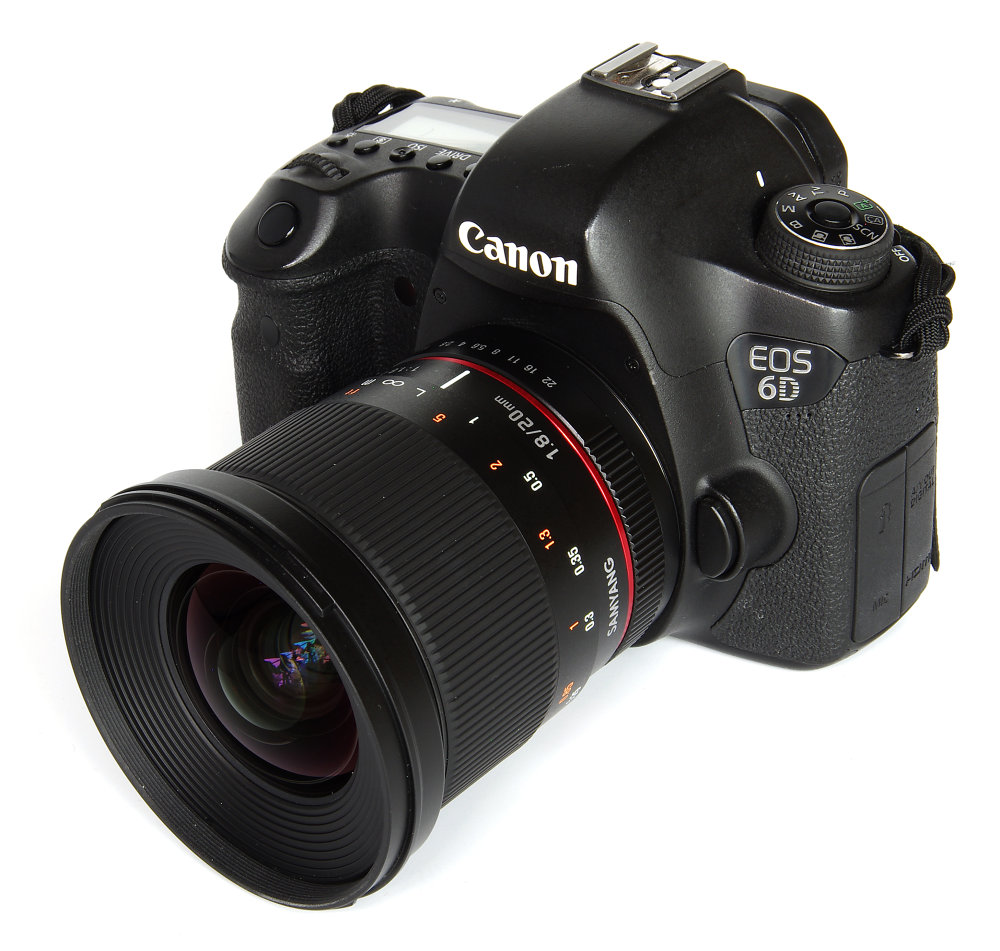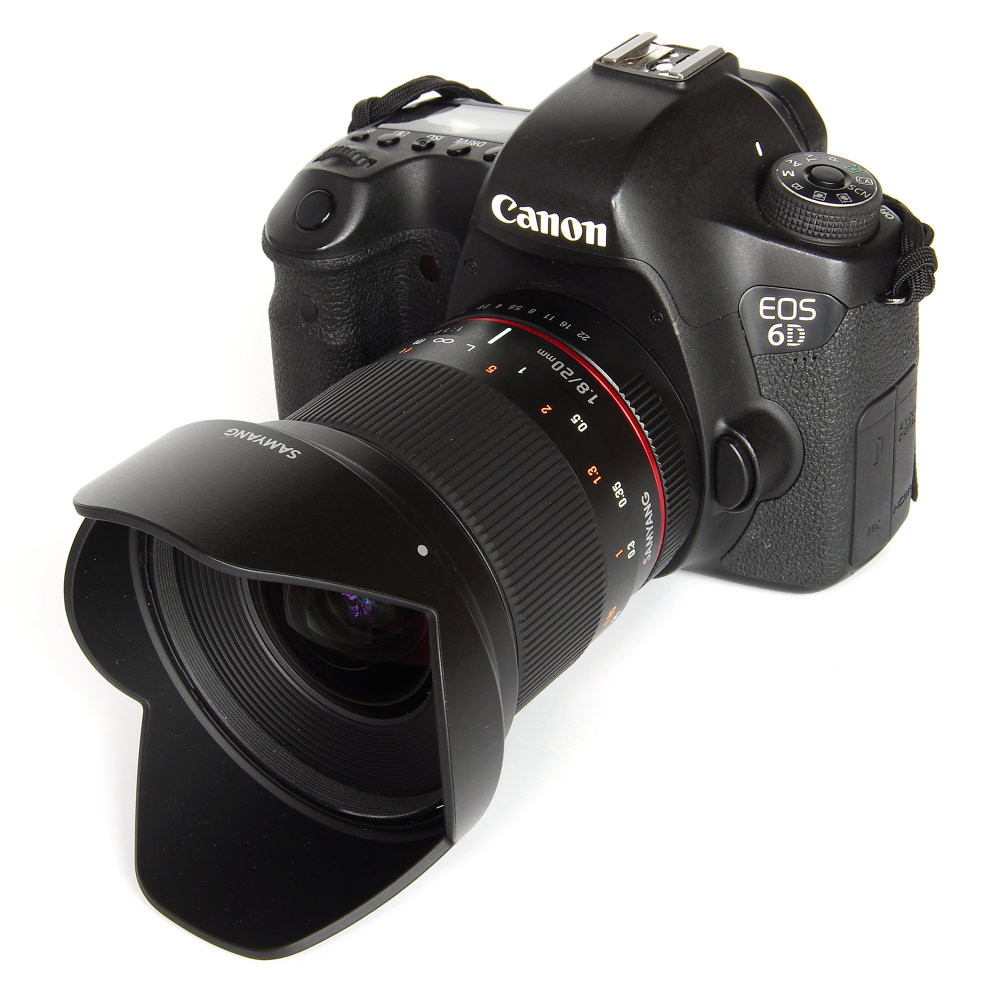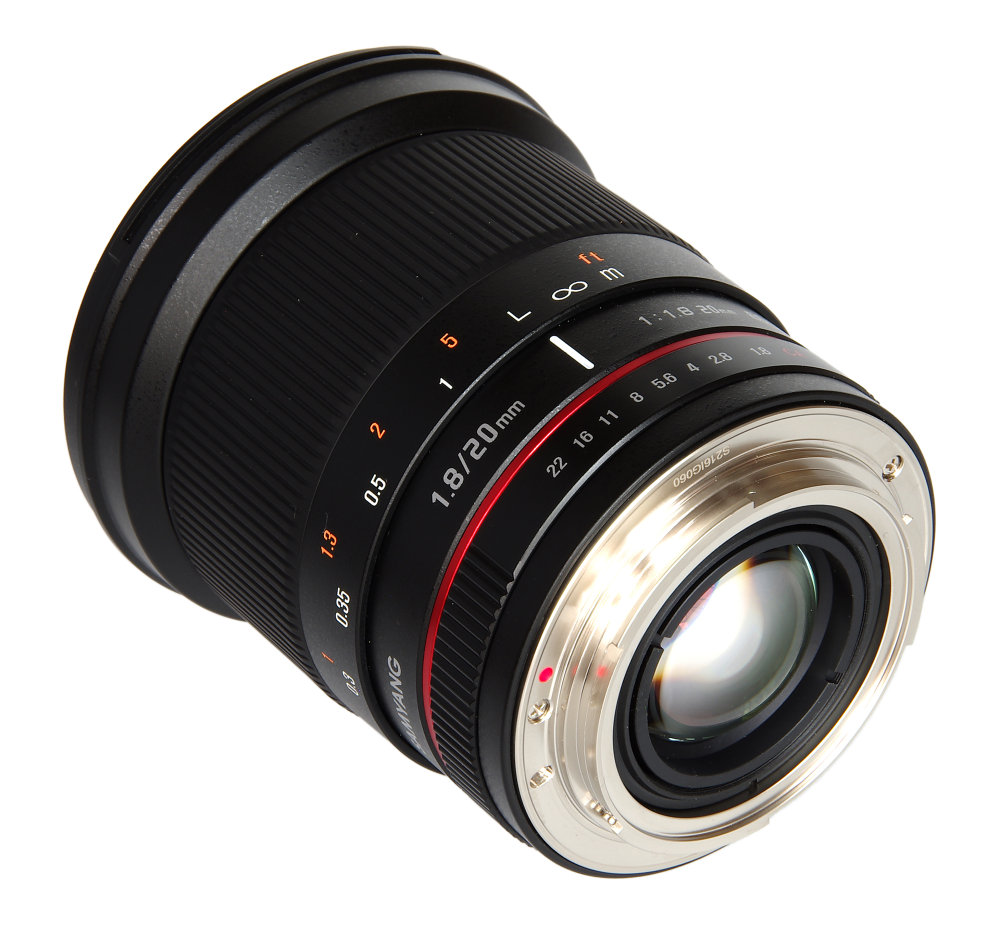Samyang 20mm f/1.8 ED AS UMC Review
Samyang 20mm f/1.8 ED AS UMC Handling and Features
This is a full frame lens and also manual focus only. Having such a wide angle, the resulting depth of field makes manual focusing less easy, but provided wider apertures are used it is not too much of a problem. It does make adjusting the camera diopter setting on the viewfinder even more important than usual. The easiest technique is to focus at open aperture and then stop down for making the exposure. It is a matter of practice to be able to set an aperture by feel or counting click stops, without removing the camera from the eye.
Mount options are listed as Canon EOS, Nikon, Pentax K, Sony A, Canon M, Fujifilm X, Samsung NX, Sony E, Four Thirds and MFT. Interestingly, the focusing direction is geared to the camera type. So, for example, Canon fit lenses focus in the reverse direction to Nikon or Pentax. The Canon fit sample reviewed did not extend this logic to the aperture ring, which turned in the Nikon/Pentax direction. The advantage is that lenses of marque origin and the Samyang lens can be used side by side with no confusion as to which way the focusing turns.
The only question mark as to the selection of mounts is that, whilst 20mm is a great lens for full frame cameras, as formats become smaller the “35mm equivalent” results in an increasingly normal looking result. So, for example, on APS-C format we have a 35mm equivalent of around 35mm and on MFT 40mm. In both these cases, we have a wide standard lens.
As always, the finish of the lens is excellent, starting with the precisely fitting bayonet lens hood. This surrounds a 77mm filter thread. Behind this sits the wide and comfortable focusing ring, clearly marked in feet and metres. Sadly, there is no depth of field scale. Finally, we find the aperture ring, which operates smoothly, with light but secure click stops. The detents are at half stop intervals, but with three steps between open aperture and f/2.8 and just one step between f/16 and f/22. The mount is well engineered and is totally devoid of electronics.
Construction comprises 13 elements in 12 groups, using 3 ED (extra-low dispersion) and 2 aspherical elements. Focusing is down to a reasonably close 0.2m (0.66 feet). There is a small extension of the optical components when focusing close, but it consists of very little movement and is well contained within the large baffle surrounding the front element. The diaphragm comprises 7 blades, which does not offer a completely round shape. At 487g (varies with mount chosen) we have a chunky but well-balanced lens that matches the supplied Canon 6D very well.
In terms of general handling, there were no operational issues and the lens proved to be a pleasure to use. The 20mm focal length does give a satisfyingly wide view that can be used creatively as well as for the more usual applications such as interiors and architecture.
Add your message
Please login here or if you've not registered, you can register here. Registering is safe, quick and free.
photodo Stats
428 MTF tests
74 in-depth photodo reviews
100+ users join each day
Help the lens community by reviewing or rating a lens today via our lens search
Latest Lens Reviews
- Chinon 28mm f/2.8 Vintage Lens Review
- Canon EF 70-200mm f/4L IS II USM Lens Review
- Samyang AF 85mm f/1.4 EF Review
- Sigma 70mm f/2.8 DG Macro Art Review
- Samyang AF 24mm f/2.8 FE Review
- Meike 50mm f/1.7 Review
- Tamron 70-210mm f/4 Di VC USD Review
- Lensbaby Burnside 35mm f/2.8 Review
- Asahi Super Takumar 50mm f/1.4 Review
- Asahi Super-Multi-Coated Takumar 135mm f/3.5 Review



